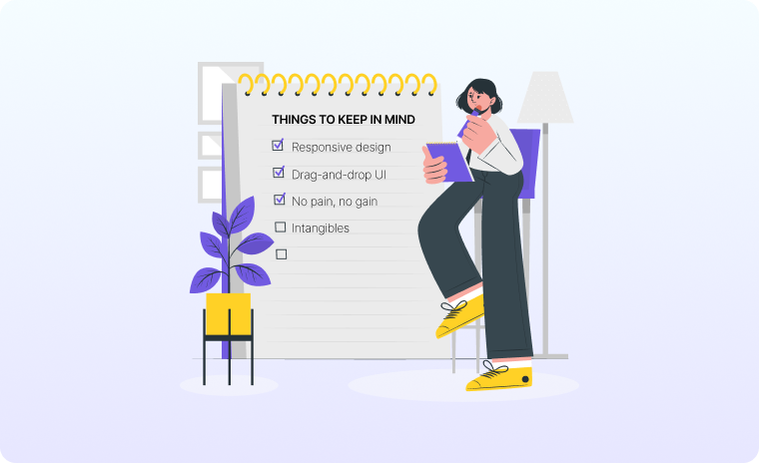3 Points to Keep in Mind While Choosing a No-code Platform
You have been reading about no-code technology, educating yourself on what you can do with no-code tools. You have come to the realization that this is the way to go for your startup, local business or career, and decided to put a no-code platform at the heart of your work life. Of all the platforms available, which one should that be? Here are a few points to remember when you finally go out to choose the no-code platform for your business.
Specify the features you need to prioritize
No-code platforms are highly capable tools and this renders them suitable for different use cases. However, choosing one for your particular scenario can be difficult as it involves striking a delicate balance between ease of use, on the one hand, and capabilities, on the other. The ideal no-code platform should not only suit your current skill level, but also be capable enough to satisfy your present and future needs. It is no easy task to find one that checks both boxes. Focusing on the most relevant features for your needs could be a good first step towards making the right choice, though.
If you want to design a website, responsive design capability has to be a priority for you because your website should feel the same whether it is on desktop, tablet or mobile. Drag-and-drop interface, which makes the design process easier and less stressful, is another feature you should seek.
If it is an application that you are willing to build, things get a little bit more complicated. Time and budget constraints usually rule out developing native apps for both iOS and Android—that’s probably one of the reasons you are interested in low-code/no-code platforms and building web apps in the first place. The audience for your web apps and the technical skills you possess to a large extent come to determine which no-code platform you should choose—and also what you can offer your audience. Provided that you have the time and effort to explore the features of a no-code platform and train yourself, the wise choice here would be to go with a more capable tool even if that means sacrificing a little bit of UI practicality.
Long-term needs over short-term gains
Looks seem to matter more than substance in most aspects of our daily lives—at least at the beginning. It is the brash designs that make the headlines every time a new model is launched at a car show or a new line of clothing or furniture is introduced. But in the long-run, it is the reliable Toyotas, affordable GAP or sensible IKEA products that survive because they get the job done. Every time.
The same applies to no-code platforms where fancy UI or ease of use can be tempting because we all want quick results. However, it is better to think ahead and invest in what will serve your future needs even if this requires a bit of a steeper learning curve. Quickly validating your idea and producing an MVP right away can be satisfying, but this usually comes at the price of future problems. The higher the level of abstraction, the easier it becomes to use a platform although this also takes away from its flexibility. Just as your business is taking off, you might discover that your no-code platform doesn’t scale in sync and be forced to shift to another which will fit your use case better. It is important to pick a no-code platform that hits the balance between abstraction and adaptability.
The intangibles matter
Parameters that the user can experience dominate the decision making process during app development. Speed and usability naturally take precedence but the not-so-sexy topics like hosting, maintenance and security are just as important for your long-term success. A no-code platform taking care of the hosting will save you from looking for third party solutions or maintaining your own server. The uptime is another critical parameter you should keep an eye on—your efforts will go to waste if your app is down frequently and the resultant revenue loss can be crippling.
The margin for error shrinks when you venture beyond the MVP stage. You can suddenly find out that your no-code platform, which was once a joy to use, comes up short on different tasks. That’s why investing in premium no-code platforms like Webflow, Integromat or Peaka is the safe option—these tools have the capabilities to take you all the way. Your business doesn’t deserve anything less as it should be built on sure footing.
Trying to choose a no-code platform from among the multitude of options available in the market can be a daunting task for the uninitiated. You can soon find yourself looking at feature sheets or comparison tables, trying to decipher acronyms you haven’t seen before. In addition to the three key points we listed above, a comprehensive guide prepared by UserGuiding comes in handy here. The guide categorizes no-code platforms according to their purpose and capabilities and lays out the respective pricing plans of each option. Make sure that you check it out before making the final decision.




 Please
fill out this field
Please
fill out this field









